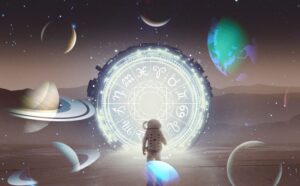Somewhere in the vast expanse of the universe lies a region so immense and empty that it defies comprehension—a cosmic void. Stretching across a billion light-years, these voids contain almost no matter, yet growing evidence suggests that we may be floating within one of similar scale. Though language falls short in capturing their magnitude, cosmic voids play a crucial role in shaping the universe’s structure and evolution.
Earth, once believed to be at the universe’s center, is now understood to be just one of countless planets scattered across space. When we look up at the night sky, we marvel at galaxies and constellations, rarely considering the immense emptiness between them. These vast voids are among the most enigmatic structures in the universe, influencing the distribution of galaxies and cosmic matter. While much of the universe consists of empty space, this “nothingness” wields significant power, subtly shaping the cosmic web.
Our Milky Way resides within a complex environment affected by nearby voids. Evidence suggests it exists inside a massive cosmic void, a phenomenon that contradicts the cosmological principle—the idea that matter should be evenly distributed on large scales. Observations reveal that matter in the universe forms clusters and filaments, leaving behind immense empty spaces. To fully grasp this structure, we must zoom out beyond galaxies, clusters, and superclusters to witness the largest pattern in nature: the cosmic web. This vast network, composed of dense clusters, thin filaments, and sprawling voids, resembles a sponge-like structure, with voids occupying over 80% of the universe’s volume yet containing less than a tenth of its mass.
Voids began as minute density fluctuations in the early universe. Over billions of years, gravity pulled matter into clusters, leaving behind expanding voids. These voids are akin to holes in a cosmic sponge, stretching hundreds of millions of light-years across and containing only faint dwarf galaxies, stray radiation, and particles.
In the late 1990s, astronomers discovered that the universe’s expansion is accelerating, driven by dark energy—a force that remains a mystery. In dense regions, gravity counteracts dark energy, but in voids, where matter is scarce, dark energy dominates, relentlessly pushing them outward and accelerating their growth. The universe, on a grand scale, resembles a sponge where voids continue to expand, further shaping cosmic structures.
One of the largest known voids, the Boötes Void, spans 330 million light-years and contains only about 60 galaxies, a stark contrast to the 2,000 galaxies expected in a region of similar size. Its emptiness challenges our understanding of cosmic evolution. Theories suggest that factors like supernova feedback and the influence of active galactic nuclei (AGN) may prevent star and galaxy formation in these voids, keeping them largely barren.
The Boötes Void raises intriguing questions about advanced civilizations. Could such an immense empty region suggest the past presence of a hyper-intelligent extraterrestrial species that harnessed cosmic resources before moving elsewhere? Much like abandoned cities on Earth, could the void be the remnants of a once-thriving civilization that depleted its surroundings?
The existence of massive voids contradicts traditional cosmological models, hinting at possible gaps in our understanding of dark matter and cosmic structure formation. Cosmic voids serve as time capsules, preserving the universe’s history while offering invaluable insights into dark energy and the fundamental forces shaping our cosmos.
In the distant future, the cosmic web will unravel as voids continue expanding, eventually isolating galaxies in vast nothingness. Before this inevitable fate, however, scientists must focus on these silent expanses. While galaxies evolve and stars fade, voids remain largely unchanged, offering pristine laboratories for studying dark energy. By mapping and analyzing voids, researchers hope to uncover the secrets of dark energy, potentially solving some of the greatest mysteries of the universe. In the end, the vast nothingness of cosmic voids may hold the key to understanding everything.






